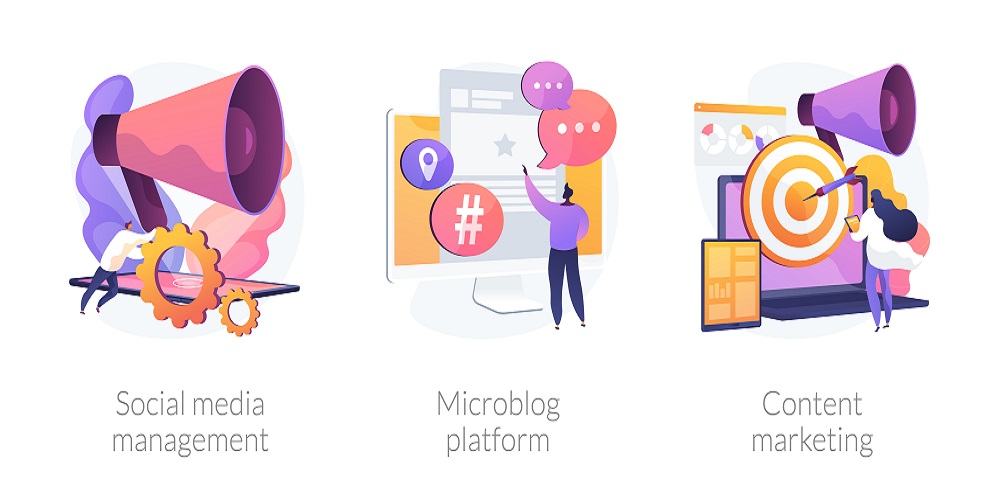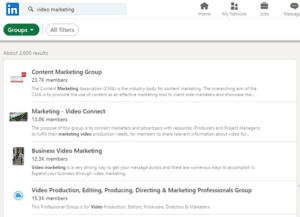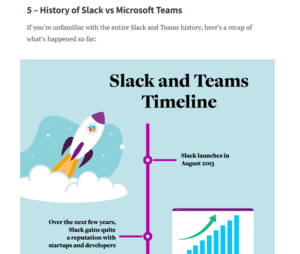You’ve published your new blog post. You’ve shared it on LinkedIn. Maybe you’re still sharing on Twitter. That’s it. Sit back and watch the views roll in.
Well, not quite.
Sure, you might have a large and heavily engaged audience. But, do you leave it there? I’m not saying you’re wrong to. But, if you’ve clicked onto this article, it’s likely because you’d like more views on your content. In this article, I’m going to introduce three components you can add to your content distribution strategy and start getting more readers.
Leveraging Content Distribution Strategies
What is a content distribution strategy, I hear you say? Be it formal or informal, a content distribution strategy is a set of things you’ll do to ensure your content reaches as many people as possible. We’re not talking about paying for adverts so any person sees your blog post. We’re talking about targeted, proactive sharing of your content.
You might have one for your personal content and/or your business’ content. In all likelihood, most businesses aren’t very good at this. Often, the people who are most proud of the content they produce are naturally better at distributing their content. They did a good job and they want everyone to notice.
My personal growth strategy as a freelance marketer has relied on sharing the content, the results of the content, and the behind-the-scenes work when I’m producing the content. As a result of sharing these snippets in the right places and with the right people, I can attribute around 75% of my income over the last five years to my content distribution strategy.
Feel bad yet? Don’t. Even the largest brands stop after sharing on their favorite social channels. But, if you want to make your content work overtime, here are the three things you can start doing right now.
Use All Social Media Features
When you post your new content on LinkedIn, what do you do with it? Share the link and write a short sentence or two explaining you’ve got a new blog? That’s a good start. But there’s so much more you could be doing.
Let’s stay with LinkedIn as the primary example. After you share on your personal LinkedIn, here are some things you can do:
- Share on your company’s LinkedIn page.
- Record a short video (using Tella or Loom) and share that on LinkedIn.
- Create a LinkedIn carousel and break up the key points of your blog post.
- Search other people’s posts and find opportunities to share your post.
- Join relevant LinkedIn groups and share your content in them.
- If you’re not part of any LinkedIn groups, find relevant ones by searching your core topics in the main search bar and then filtering to Groups.
The same applies to Twitter. After you share on your personal Twitter, here are some things you can do:
- Write a Twitter thread properly (don’t just copy and paste your blog post).
- Join Twitter chats like #AVintheAM and #CollabTalk and share when relevant.
- Host Twitter Spaces (the drop-in audio chats).
- Try posting with an image and a link vs just the link.
- Record a video introducing your blog post.
Repurpose Your Blog Post
If your primary content is something other than a blog post (a video or a podcast maybe), just swap the words around in the section. They all apply regardless of format. If you apply the items for LinkedIn and Twitter in the first section, you’ve already started repurposing your content.
To go even further, why not use the same topic and transform it into a different format? If you’ve written a blog post, it’s for a reason, right? Well, would that topic make a good podcast episode too? You’ve got all the content, you just need to chat about it. If you’re going to record a podcast, you can record the video too. Now, you have an audio podcast and a YouTube video.
If your blog post has data-heavy content, it’s the perfect opportunity to create an infographic. They say a picture is worth a thousand words, after all. When you’ve got your infographic, you can then embed that into the blog post and improve upon your original content.
If recording a podcast is your original content, make sure you record a transcript. When you have literally all the words you recorded, you have a brilliant starting point for a blog post.
Find A Niche Community
There’s no better place to share your content than a community that exists specifically for your topic. These are places where industry folk hang out. A great example in the Microsoft world is the Microsoft Support Community. Here, people ask questions every day about various topics relating to Teams, Viva, SharePoint, etc. When you publish new content, search key phrases and see if people are asking about the things you’ve just written/recorded about.
Note: people aren’t just going to click a link. You must give them context too. A good example response is: “Hey, I was having this problem too. I solved it by XYZ and have now documented that in this blog post: www.yourblogpost.com”.
Where you find these communities depends on your niche. In fact, it’s a micro-niche we’re talking about when it comes to the world of AV, UC, and integration. You’re probably in small groups on different platforms that are perfect examples of these.
When I was promoting my book, The Autonomous Freelancer, I made sure I’d been hanging out in freelance forums and Slack communities so I had become a credible source for freelance help. As a result, I got lots of clicks and book sales from these communities.
The fact that you’ve been active in the groups gives you an upper hand when it comes to content distribution too. If you were brand new and started sharing links and hadn’t built any trust, nobody would engage with you.
Need for Checklists
I wasn’t very good at content distribution until I literally wrote down all the places I could share different types of content. Learning where to share things and finding out what worked and didn’t work was a time-consuming process.
However, having a checklist helps break down the strategy you have in mind. Use this every time you publish new content. Check off the new places and new techniques and then watch your views skyrocket.
Dominic Kent is freelance content marketing consultant.




















